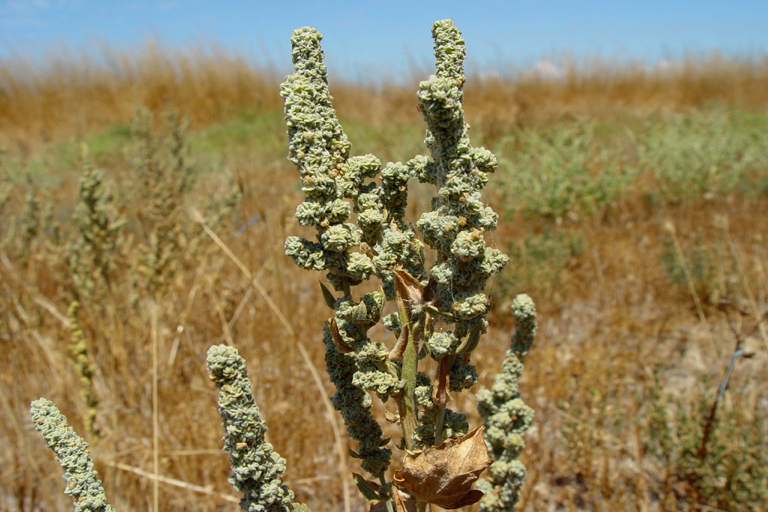So I have another photo that features sauerkraut, sorry. This is a picture of the best way to spend a Sunday morning:

Scrambled eggs, fresh tomatoes, salsa, and sauerkraut, listening to Car Talk on my $5 rummage sale radio, sitting on the back porch early in the morning when it's not so hot yet. I can even wear slippers and jeans that early in the morning, what luxury!
To be honest, I've moved on from eggs and sauerkraut to a new favorite breakfast food. Let me first say that breakfast has always been my favorite meal. It probably has something to do with the fact that you can pass off dessert as breakfast and eat as much maple syrup, jelly, and
carbs as you want. It's also just a great way to start the day, taking some time for yourself to make food, then sit and eat it while reading some blogs or the newspaper or something. Of course, that means that you have to get up early enough to prepare said food and have the time to eat it slowly, which I usually do. It's a priority.
So here is the latest breakfast endeavor. I was reading a post by Carlene over at
knitsquirrel the other day and I decided to try her "vat of steel cut oats." It was super easy to make and I copied her and stuck the whole pot in the fridge afterwards.

I've been putting milk, flax seeds, and raspberry jam in there. It is
soooooo good, and it's basically what I've been looking for in a breakfast meal for months now. I've been making my oatmeal with rolled oats and I've been craving something creamier. This has the perfect creaminess, with a little crunch from the oat kernels that reminds me of the subtle crunch of
quinoa, though much smoother in texture, obviously.

A total success.
I also got a
CSA box on Wednesday and I get the whole thing to myself this time because my
CSA buddy Sarah is out of town.

Basil, "Nantes" carrots, beets, white sweet corn, a cucumber, "Red Haven" peaches, potatoes, and summer squash. So many funny shapes, so many rich and varied colors. I'm going to have to make
zucchini bread, it's for sure. I have some more summer squash left over from the BBQ, and I'm never going to eat them all in time. The little goose-necked yellow squash are almost dead as it is. I might also get around to making those
carrot spice muffins from
FatFree Vegan Kitchen that I've been thinking about too.

The newsletter came with a recipe for Roasted Beet Salad which I'm going to try, though I've been thinking about trying to
dye some fabric with the beets as well. Unfortunately, most of the online resources I checked make me think that that won't work too well.
I got a huge bunch of basil and I'm going to try to make pesto. I've never made it, but the last time I got basil in my box I let it go bad in the fridge. I haven't gotten the hang of keep it nice and fresh, it seems to wilt, then when I try to freshen it with water, it rots. It's a mystery to me, I think I'll just try to use it as quickly as possible.

There were four peaches in the box too, but two of them didn't make it to the photo shoot. Whoops.
Posts have been few and far between lately because I'm hard at work trying to figure out my research. Tomorrow I'm going to the
Jepson Herbarium at UC Berkeley which I am
nerdily thrilled about. An
herbarium is basically a large facility with thousands of dried plant samples in it, neatly pressed on sheets of paper. It's an important botanical resource for people to use to identify plants and compare them to specimens that have already been collected and identified. I've been invited down there to go through the old files of Lawrence
Heckard, one of the old curators of the
herbarium who has passed away. He and
Tsan-
Iang Chang are the authors of an article that was published in the 70s that is the only published record of the germination of the plant I'm studying,
Cordylanthus palmatus. I'm going to see if his records will give me a hint as to how he did it. I actually feel very important, the
Jepson Herbarium is really big and prestigious and it's devoted largely to California flora. Nerd it up!































